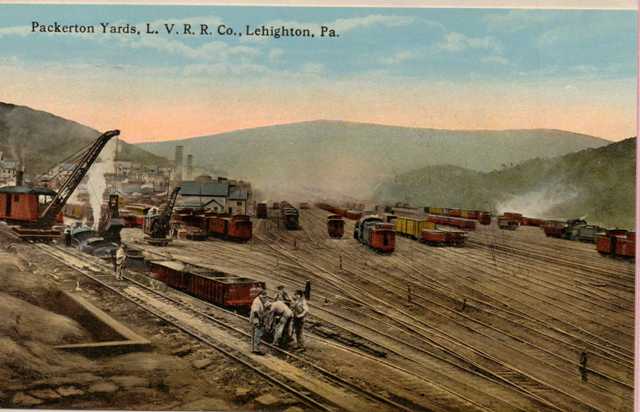A few questions for those familiar with the area of Lehighton, Packerton, Mahoning et al...
1. When was the CNJ bridge over the LV main taken down? I know the trackage agreement and CNJ connecting track were in 1965 but I vaguely remember the bridge still there in the early 1980s.
2. When was the LV passenger sta in Lehighton torn down? Did CR sell it to the city? I think it came down when they widened Stan Hoffman Blvd as the by-pass around the city.
3. Did Packerton Yard see any activity after 1965? I saw a video of a freight entering the yard in the late-60s and the whole thing looked weed covered. But then I read it didn't get abandoned until 1972 when the LV aquired the CNJ yard in A'town. The 1938 arial of packerton yard show it full of nothing but coal hoppers.
4. Does anyone remember in the early to mid 1980s there was some type of MOW or circus or rail cars parked on one of the unused tracks in Packerton for like 10 friggin years. I think they were white or grey; looked like steel cages. They never moved for like years!
5. Is that searchlight signal in Packerton on one of the seldom used tracks still working? About 10 years ago I was there and CR spotted some cars on the side track just before the signal, and to my amazement the signal was lit up green! I'm assuming that track must have been a mainline at one time. It's near the grade xing.
6. Does anyone remember when all the track was ripped out of packerton? It must have been quite an undertaking!
7. Does anyone ever remember seeing or know when the spot lights in the yard were last illuminated? And how did the one light tower (that's now at Kovatches) with all the lights on it remain all those years after the others were torn down?
8. Was it CR who sold the land or the LV?
1. When was the CNJ bridge over the LV main taken down? I know the trackage agreement and CNJ connecting track were in 1965 but I vaguely remember the bridge still there in the early 1980s.
2. When was the LV passenger sta in Lehighton torn down? Did CR sell it to the city? I think it came down when they widened Stan Hoffman Blvd as the by-pass around the city.
3. Did Packerton Yard see any activity after 1965? I saw a video of a freight entering the yard in the late-60s and the whole thing looked weed covered. But then I read it didn't get abandoned until 1972 when the LV aquired the CNJ yard in A'town. The 1938 arial of packerton yard show it full of nothing but coal hoppers.
4. Does anyone remember in the early to mid 1980s there was some type of MOW or circus or rail cars parked on one of the unused tracks in Packerton for like 10 friggin years. I think they were white or grey; looked like steel cages. They never moved for like years!
5. Is that searchlight signal in Packerton on one of the seldom used tracks still working? About 10 years ago I was there and CR spotted some cars on the side track just before the signal, and to my amazement the signal was lit up green! I'm assuming that track must have been a mainline at one time. It's near the grade xing.
6. Does anyone remember when all the track was ripped out of packerton? It must have been quite an undertaking!
7. Does anyone ever remember seeing or know when the spot lights in the yard were last illuminated? And how did the one light tower (that's now at Kovatches) with all the lights on it remain all those years after the others were torn down?
8. Was it CR who sold the land or the LV?
